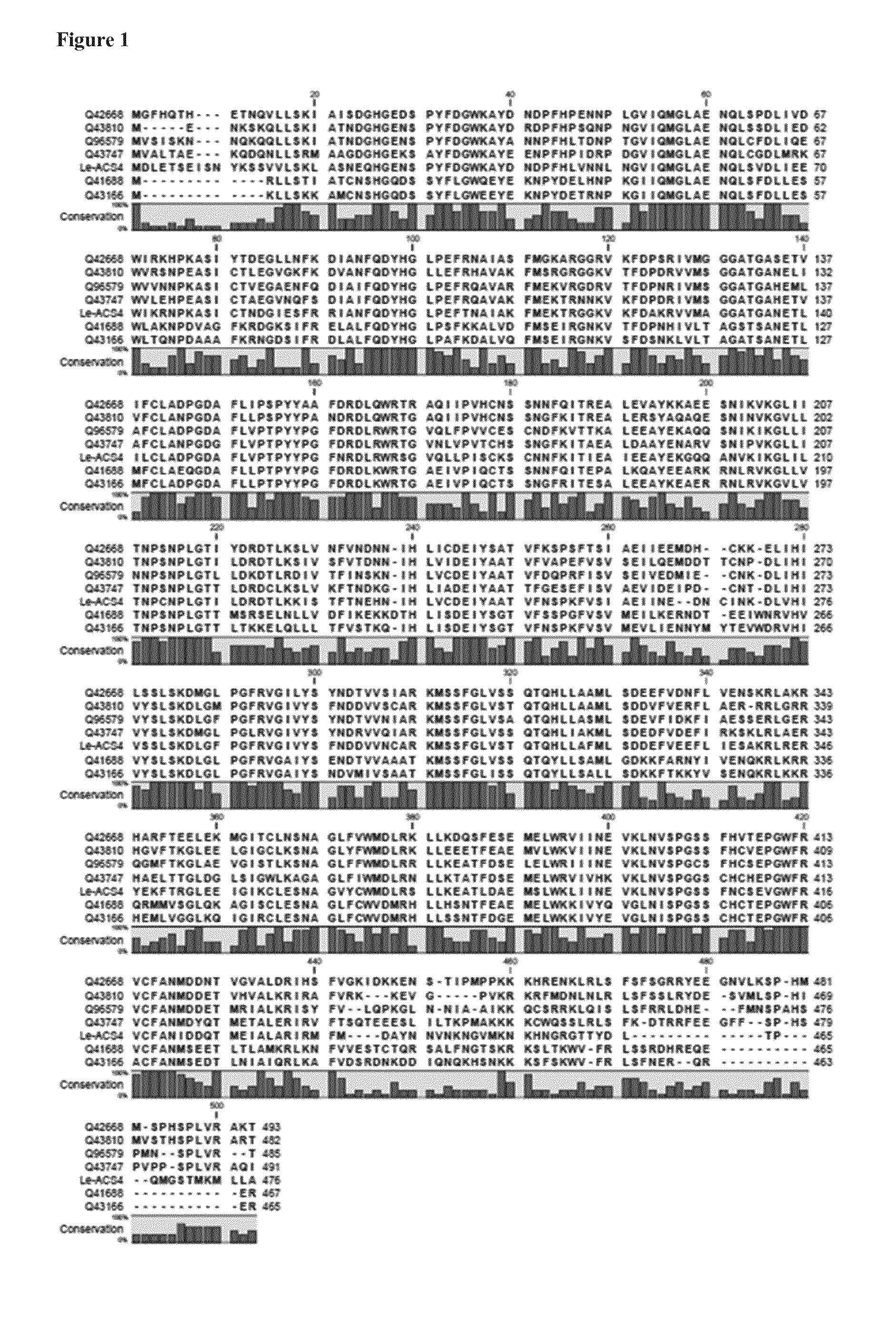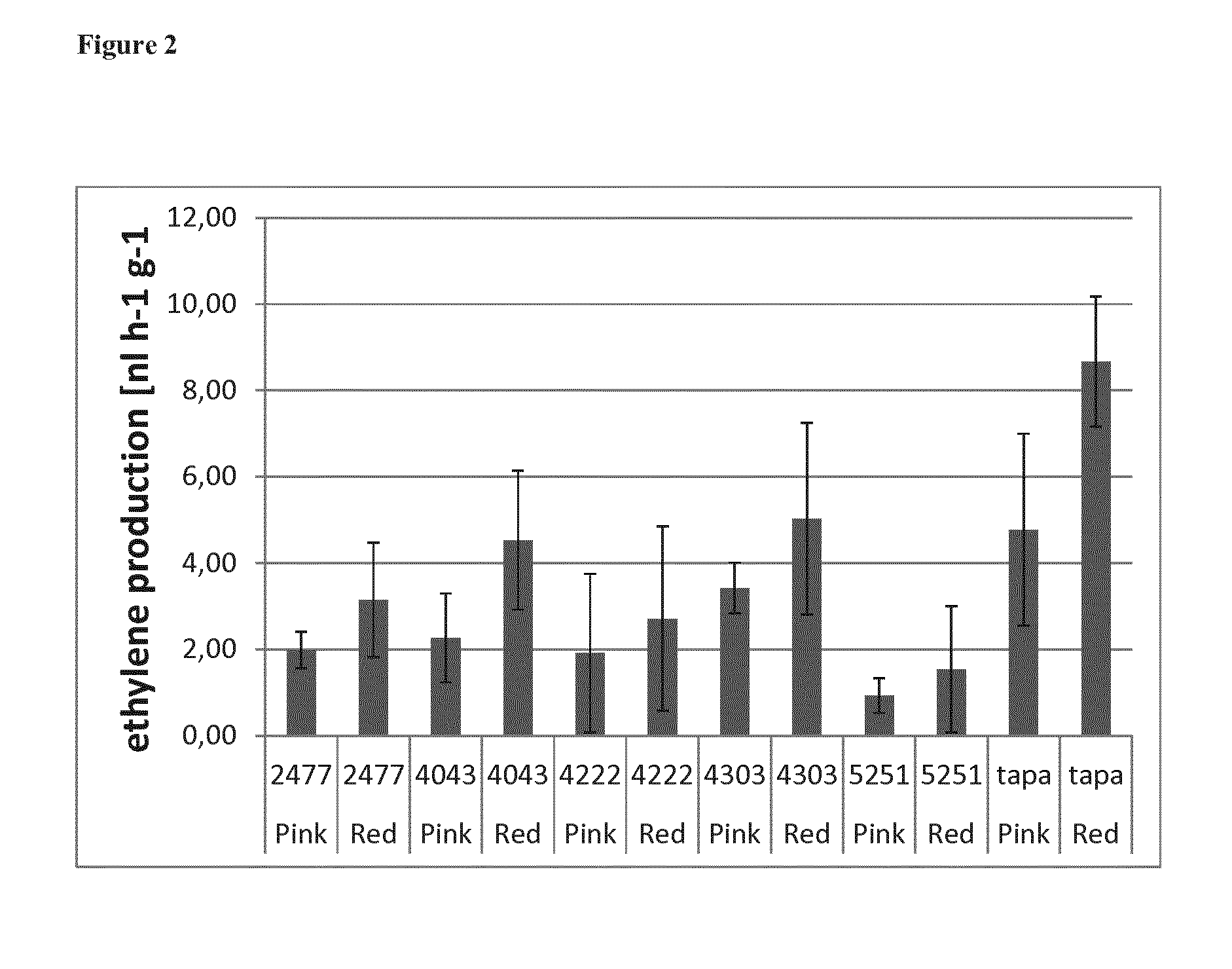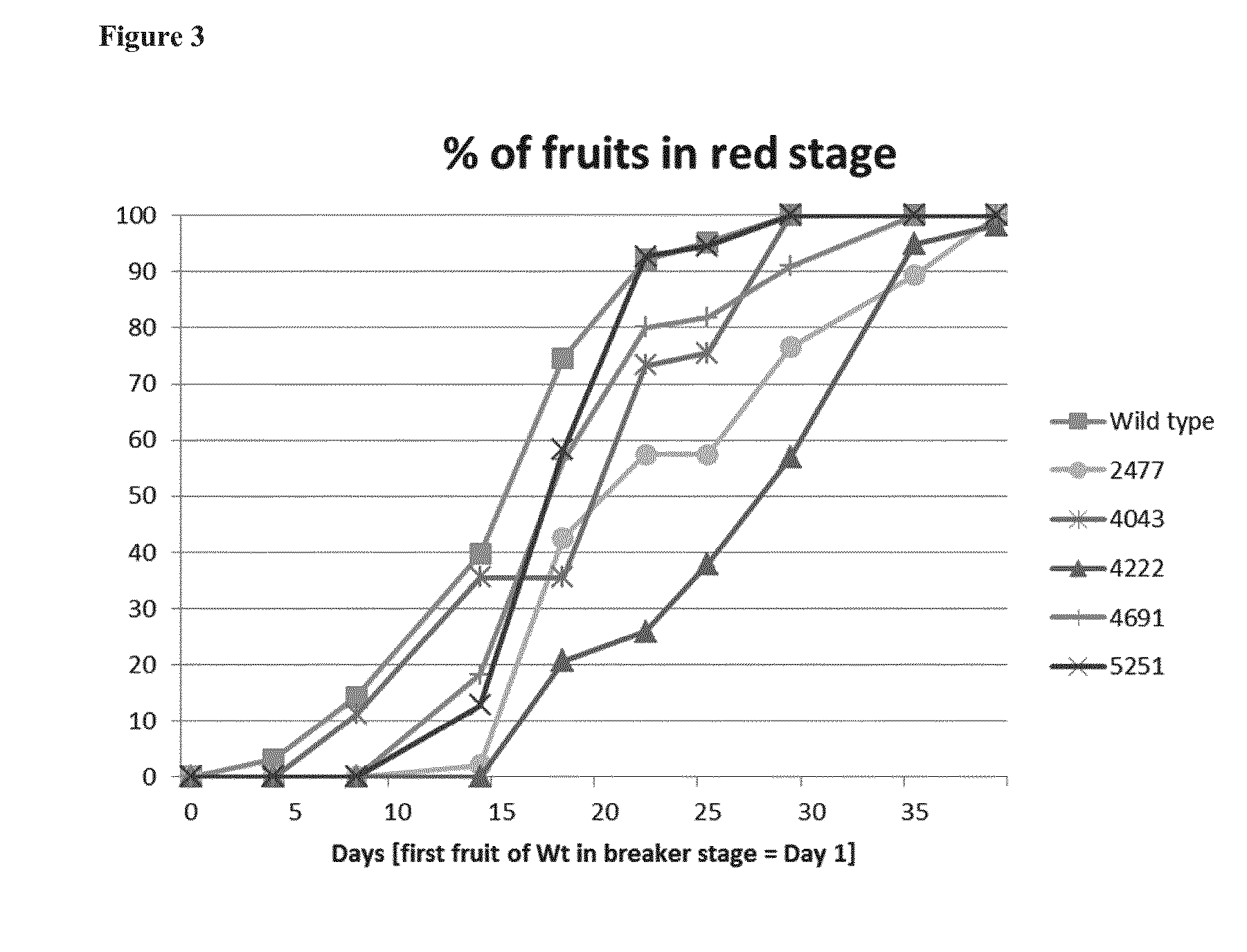Solanum lycopersicum plants having non-transgenic alterations in the acs4 gene
- Summary
- Abstract
- Description
- Claims
- Application Information
AI Technical Summary
Benefits of technology
Problems solved by technology
Method used
Image
Examples
example 1
[0166]A highly homozygous inbred line used in commercial processing tomato breeding was used for mutagenesis treatment with the following protocol. After seed germination on damp Whatman® paper for 24 h, -20,000 seeds, divided in 8 batches of 2500 respectively, were soaked in 100 ml of ultrapure water and ethyl methanesulfonate (EMS) at a concentration of 1% in conical flasks. The flasks were gently shaken for 16 h at room temperature. Finally, EMS was rinsed out under flowing water. Following EMS treatment, seeds were directly sown in the greenhouse. Out of the 60% of the seeds that germinated, 10600 plantlets were transplanted in the field. From these 10600 plantlets, 1790 were either sterile or died before producing fruit. For each remaining M1 mutant plant one fruits was harvested and its seeds isolated. The obtained population, named M2 population, is composed of 8810 seeds lots each representing one M2 family. Of these, 585 families were excluded from the population...
example 2
Ripening Behaviour of the Acs4 Mutants
[0194]Seeds containing the different mutations were germinated and plants were grown in pots with soil the greenhouse with 16 / 8 light dark regime and 18° C. night and 22-25° C. day temperature. For each genotype 5 plants were raised. The second, third and fourth inflorescence were used for the analysis. The inflorescences were pruned, leaving six flowers per inflorescence that were allowed to set fruit by self-pollination. The dates of fruit set of the first and sixth flower was recorded as was the date of breaker and red stage of the first and sixth fruit. At red stage of the 4th fruit the truss was harvested and stored in an open box in the greenhouse. Fruit condition of the fruits was recorded during the whole ripening period by making pictures from each truss. After harvest pictures were made per box containing all trusses from one genotype.
[0195]At later stages fruit condition was determined based on visual assessment of the fruits and the ...
example 3
Ethylene Release
[0198]Ethylene released by tomato fruits was measured in real-time with a laser-based ethylene detector (ETD-300, Sensor Sense B. V., Nijmegen, the Netherlands) in combination with a gas handling system (Cristecu et al., Laser-based systems for trace gas detection in life sciences. Appl Phys B 2008; 92 pp 343-9). Six glass cuvettes (100 mL volume) were used per experiment, one as a reference without plant material. Air was sampled from the lab and passed through a platinum based catalyzer (Sensor Sense B. V., Nijmegen, the Netherlands) to remove traces of ethylene or other hydrocarbons. Between the sample and the detector scrubbers with KOH and CaCl2 were placed to reduce the CO2 concentration (to less than 1 ppm) and decrease the water content in the gas flow, respectively.
[0199]Comparison of the ethylene released from fruits of mutant 2477, 4043, 4222, and 5251 with wild type (commercial variety tapa) at Pink stage and red stage revealed that at both stages the eth...
PUM
| Property | Measurement | Unit |
|---|---|---|
| Fraction | aaaaa | aaaaa |
| Fraction | aaaaa | aaaaa |
| Time | aaaaa | aaaaa |
Abstract
Description
Claims
Application Information
 Login to View More
Login to View More - R&D
- Intellectual Property
- Life Sciences
- Materials
- Tech Scout
- Unparalleled Data Quality
- Higher Quality Content
- 60% Fewer Hallucinations
Browse by: Latest US Patents, China's latest patents, Technical Efficacy Thesaurus, Application Domain, Technology Topic, Popular Technical Reports.
© 2025 PatSnap. All rights reserved.Legal|Privacy policy|Modern Slavery Act Transparency Statement|Sitemap|About US| Contact US: help@patsnap.com



